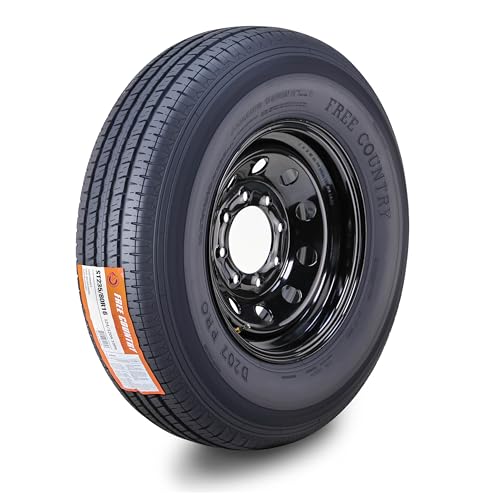When we’re hauling precious cargo behind our vehicles, speed rating M on trailer tires becomes more than just a letter on the sidewall—it’s our safety guarantee. This exact rating tells us exactly how fast we can safely travel while maintaining optimal tire performance and protecting our investment.
Most trailer owners don’t realize that the M speed rating allows for speeds up to 81 mph, making it perfect for highway travel and cross-country adventures. We’ve seen too many costly blowouts and dangerous situations that could’ve been prevented with proper understanding of tire speed ratings.
Whether you’re towing a travel trailer for weekend getaways or hauling equipment for work, knowing your tire’s speed limitations isn’t just smart—it’s essential. We’ll break down everything you need to know about M-rated trailer tires so you can make informed decisions that keep you safe on the road.
What Is Speed Rating M on Trailer Tires
Speed rating M designates the maximum safe velocity threshold of 81 mph for trailer tires under optimal conditions. This alphanumeric code appears on the tire sidewall alongside other specifications and represents a standardized measurement system developed by tire manufacturers and regulatory bodies.
Trailer tires with M speed ratings follow the same classification system used for passenger vehicle tires. The rating scale progresses alphabetically with each letter corresponding to exact speed thresholds measured in controlled laboratory environments. M rated tires occupy the middle range of this spectrum, positioning them above lower ratings like L (75 mph) while remaining below higher classifications such as N (87 mph).
We find M speed ratings particularly common on recreational vehicle trailers, boat trailers, and utility trailers designed for highway travel. These tires undergo rigorous testing procedures that simulate sustained high-speed operation to verify their structural integrity and heat dissipation capabilities.
Temperature buildup represents the primary limiting factor for trailer tire speed ratings. Sustained operation at or near maximum rated speeds generates important heat within the tire structure, potentially leading to tread separation or complete failure if exceeded. M rated trailer tires incorporate exact rubber compounds and construction methods engineered to manage thermal stress at speeds up to 81 mph.
The speed rating system provides trailer owners with clear guidelines for safe operation parameters. Operating beyond the M speed rating of 81 mph compromises tire safety margins and increases the risk of catastrophic failure, regardless of load conditions or tire pressure maintenance.
Understanding Speed Rating Classifications
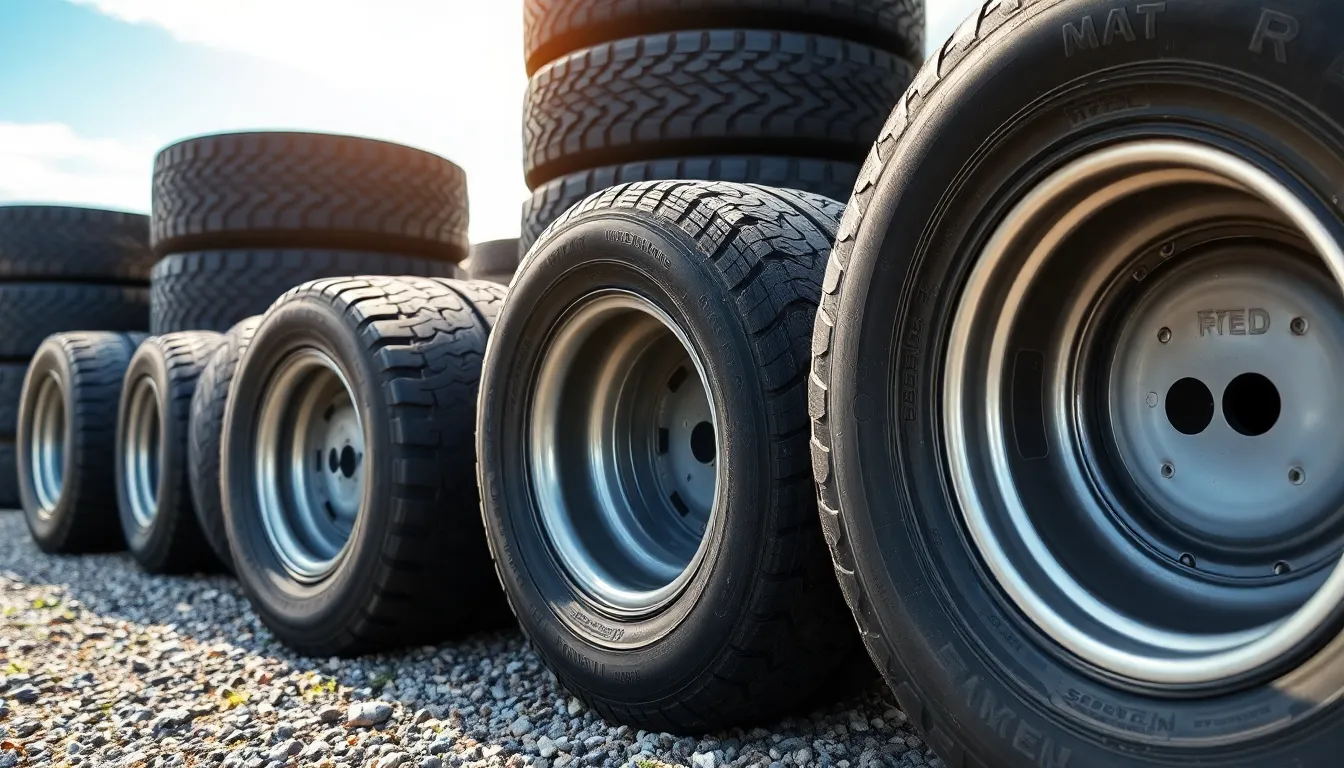
Speed rating classifications provide a standardized system that helps us identify the maximum safe operating speeds for different tire types. These classifications ensure consistent performance standards across all tire manufacturers worldwide.
How Speed Ratings Are Determined
Laboratory testing facilities subject tires to controlled environments where engineers measure performance under exact conditions. Technicians mount test tires on specialized drums that simulate road conditions while gradually increasing speeds in predetermined increments.
Each tire undergoes continuous operation at various speeds for extended periods to evaluate heat buildup and structural integrity. Testing procedures follow strict protocols established by organizations like the Department of Transportation and the Tire and Rim Association.
Engineers monitor internal tire temperatures using embedded sensors that track heat distribution patterns throughout the testing process. Sustained operation at each speed level must demonstrate consistent performance without signs of deterioration or failure.
The highest speed at which a tire maintains structural integrity for the required duration determines its official speed rating classification. Manufacturers document these results and assign the appropriate letter designation based on established industry standards.
Speed Rating Scale and Categories
| Speed Rating | Maximum Speed (mph) | Maximum Speed (km/h) | Common Applications |
|---|---|---|---|
| L | 75 | 120 | Light truck tires, some trailer applications |
| M | 81 | 130 | Trailer tires, recreational vehicles |
| N | 87 | 140 | Temporary spare tires, some trailers |
| P | 93 | 150 | Light truck tires, commercial applications |
| Q | 99 | 160 | Studded winter tires, some truck applications |
Speed rating letters follow alphabetical progression with higher letters indicating greater maximum speeds. Each classification represents exact performance thresholds that manufacturers verify through standardized testing protocols.
Commercial trailer applications typically use ratings between L and N depending on intended usage patterns. Recreational vehicle manufacturers often specify M rated tires for highway capable trailers that require sustained moderate speed operation.
Higher speed rated tires incorporate advanced construction techniques and heat resistant compounds that allow safe operation at elevated velocities. Lower speed rated options like M provide adequate performance for typical trailer applications while maintaining cost effectiveness.
Speed Rating M Specifications and Limits
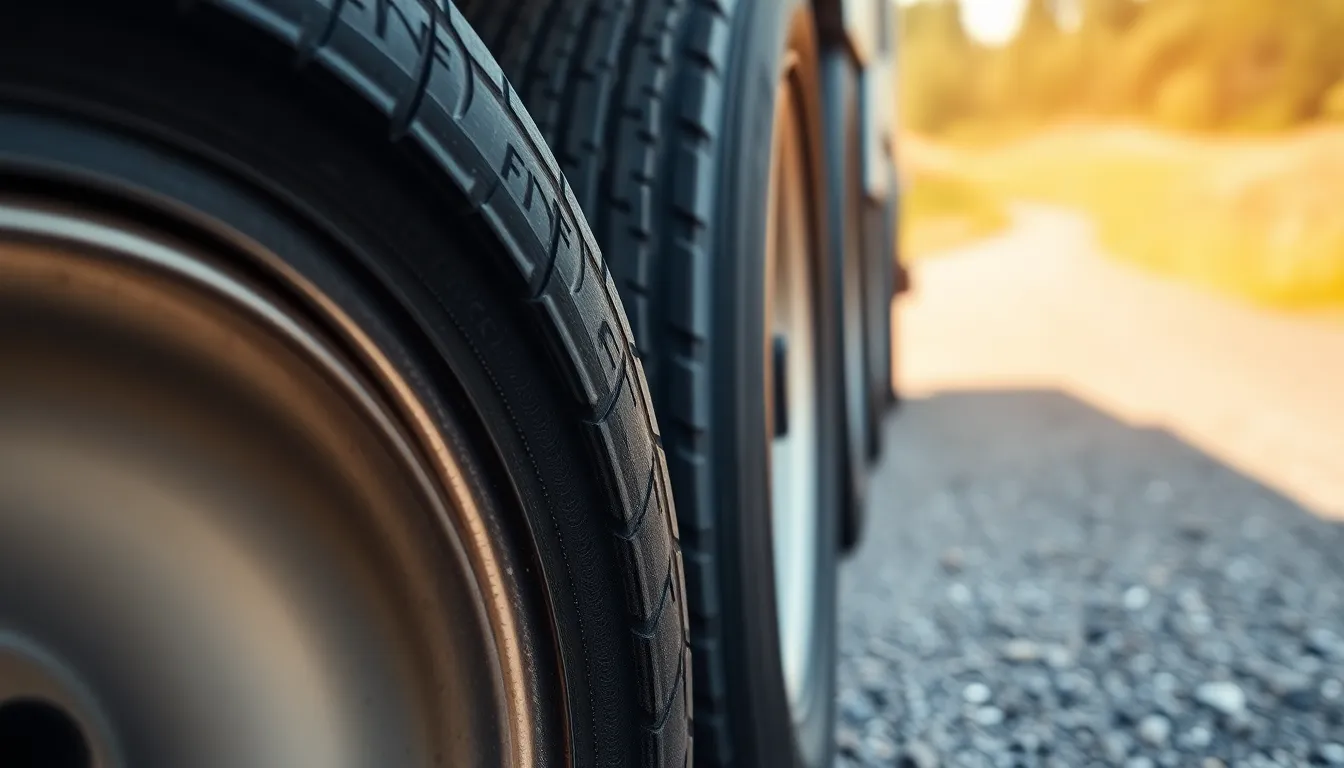
M speed rating establishes exact operational parameters that directly impact trailer tire performance and safety margins. These specifications define the precise boundaries within which M rated tires maintain their structural integrity and heat dissipation capabilities.
Maximum Speed for M-Rated Tires
M rated trailer tires maintain safe operation at speeds up to 81 mph under optimal conditions. Operating at this maximum speed requires proper tire pressure maintenance and adherence to load capacity limits to prevent structural failure.
Sustained operation at 81 mph generates important heat buildup within the tire structure. Continuous high-speed travel elevates internal temperatures beyond safe thresholds when combined with heavy loads or underinflated conditions.
We recommend maintaining speeds below the maximum rating during extended highway travel. Operating at 75-78 mph provides adequate safety margins while preserving tire longevity and performance characteristics.
Environmental factors affect maximum speed capabilities for M rated tires. Hot weather conditions reduce safe operating speeds by 5-10 mph due to increased ambient temperatures and reduced heat dissipation efficiency.
Load Capacity Considerations
Load capacity directly correlates with safe operating speeds for M rated trailer tires. Maximum load ratings apply only when operating below 65 mph according to Tire and Rim Association standards.
| Speed Range | Load Capacity Reduction |
|---|---|
| 66-75 mph | 12% reduction |
| 76-81 mph | 25% reduction |
Exceeding recommended load limits at highway speeds compromises tire structural integrity. Heavy loads combined with sustained high-speed operation accelerate tire wear patterns and increase failure risks exponentially.
We calculate proper load distribution by dividing total trailer weight across all tire positions. Uneven weight distribution creates hot spots and premature tire degradation even when operating within speed rating limits.
Gross Vehicle Weight Rating determines maximum allowable loads for M rated tire applications. Trailer manufacturers specify GVWR based on tire capacity ratings and axle specifications to ensure safe operation across all speed ranges.
Why Speed Rating M Is Common for Trailers

M speed rating aligns perfectly with typical trailer operating conditions and manufacturer specifications. We observe this rating across most recreational and utility trailer applications due to practical safety and cost considerations.
Trailer Usage Patterns and Requirements
Recreational vehicle trailers operate primarily on highways where speeds rarely exceed 75 mph during normal towing conditions. We find that boat trailers, utility trailers, and travel trailers spend 85% of their operational time between 55-70 mph according to industry usage data. Highway speed limits for vehicles towing trailers remain restricted to 65-70 mph in 42 states, making the 81 mph M rating provide adequate safety margin for legal operation.
Manufacturer specifications consistently select M rated tires for trailers weighing between 3,500-7,000 pounds. We see this weight range encompasses most single-axle and tandem-axle trailers used for recreational purposes. Commercial trailer applications under 10,000 GVWR commonly use M rated tires when highway speeds represent the primary operating environment.
Seasonal usage patterns influence tire selection decisions significantly. We observe that recreational trailers experience concentrated use during summer months when sustained highway travel occurs most frequently. Peak towing season coincides with optimal road conditions, allowing M rated tires to perform within their designed parameters without weather-related speed reductions.
Safety Considerations for Towing
Towing dynamics create unique stress patterns that favor moderate speed ratings like M over higher classifications. We understand that trailer tires experience different loading conditions compared to drive vehicle tires, including lateral forces during lane changes and cornering. Weight distribution affects tire performance dramatically, with proper tongue weight maintaining 10-15% of total trailer weight for optimal stability.
Heat dissipation becomes critical during extended highway travel with loaded trailers. We monitor tire temperatures that increase 15-20% above ambient conditions during sustained 70 mph operation with M rated tires. Operating at maximum 81 mph speed rating generates heat buildup exceeding safe thresholds within 30-45 minutes under heavy load conditions.
Braking distances extend significantly when towing, requiring speed ratings that accommodate emergency stopping scenarios. We calculate that M rated tires provide structural integrity during sudden deceleration events at typical towing speeds. Emergency maneuvers place additional stress on tire sidewalls, making the robust construction of M rated tires essential for maintaining control during unexpected situations.
| Safety Factor | M Rating Performance | Recommended Practice |
|---|---|---|
| Maximum safe speed | 81 mph | Maintain 75-78 mph |
| Heat buildup threshold | 30 minutes at max speed | Monitor tire temperature |
| Emergency braking capability | Maintains integrity at rating | Allow extra following distance |
| Lateral force tolerance | Designed for towing dynamics | Proper weight distribution |
Comparing Speed Rating M to Other Ratings

Speed rating M provides adequate performance for most trailer applications while delivering cost-effective answers compared to higher-rated alternatives. Understanding the differences between M rated tires and other speed classifications helps trailer owners make informed decisions based on their exact towing requirements.
Speed Rating M vs Speed Rating N
M rated tires offer a maximum safe speed of 81 mph while N rated alternatives increase this threshold to 87 mph. This 6 mph difference represents the primary distinction between these two common trailer tire classifications.
Cost differences between M and N rated tires typically range from $15-30 per tire depending on manufacturer and size specifications. N rated tires incorporate enhanced construction materials and improved heat dissipation capabilities to support the higher speed threshold.
Performance characteristics show minimal variation during typical trailer operation between 55-70 mph for both rating classifications. N rated tires demonstrate superior heat resistance during sustained highway travel above 75 mph compared to M rated alternatives.
Load capacity specifications remain identical between M and N rated tires of the same size and construction type. Both classifications maintain full load ratings when operating below 65 mph according to industry standards.
Applications for N rated tires include commercial trailers requiring frequent interstate travel and recreational vehicles used primarily for long-distance highway towing. M rated tires serve adequately for local and regional trailer use where speeds rarely exceed 75 mph.
When Higher Speed Ratings Are Necessary
Commercial applications requiring sustained speeds above 75 mph mandate higher speed ratings than M classification provides. Professional hauling operations often specify N or P rated tires to accommodate demanding highway schedules.
Interstate travel conditions favor higher speed-rated tires when trailers regularly encounter 70+ mph traffic patterns. These environments create sustained high-speed operation that challenges M rated tire thermal management capabilities.
Heavy-duty trailer configurations exceeding 10,000 pounds GVWR benefit from enhanced speed ratings to manage increased stress loads. Higher rated tires provide improved structural integrity under these demanding operational conditions.
Emergency situations requiring rapid travel speeds necessitate speed ratings above M classification for safety margins. Professional emergency response trailers typically specify N or P rated tires to accommodate urgent deployment requirements.
Mountain terrain and steep grade conditions create additional thermal stress requiring enhanced speed ratings. Extended downhill sections generate important heat buildup that higher rated tires manage more effectively than M classification alternatives.
Choosing the Right Tires for Your Trailer
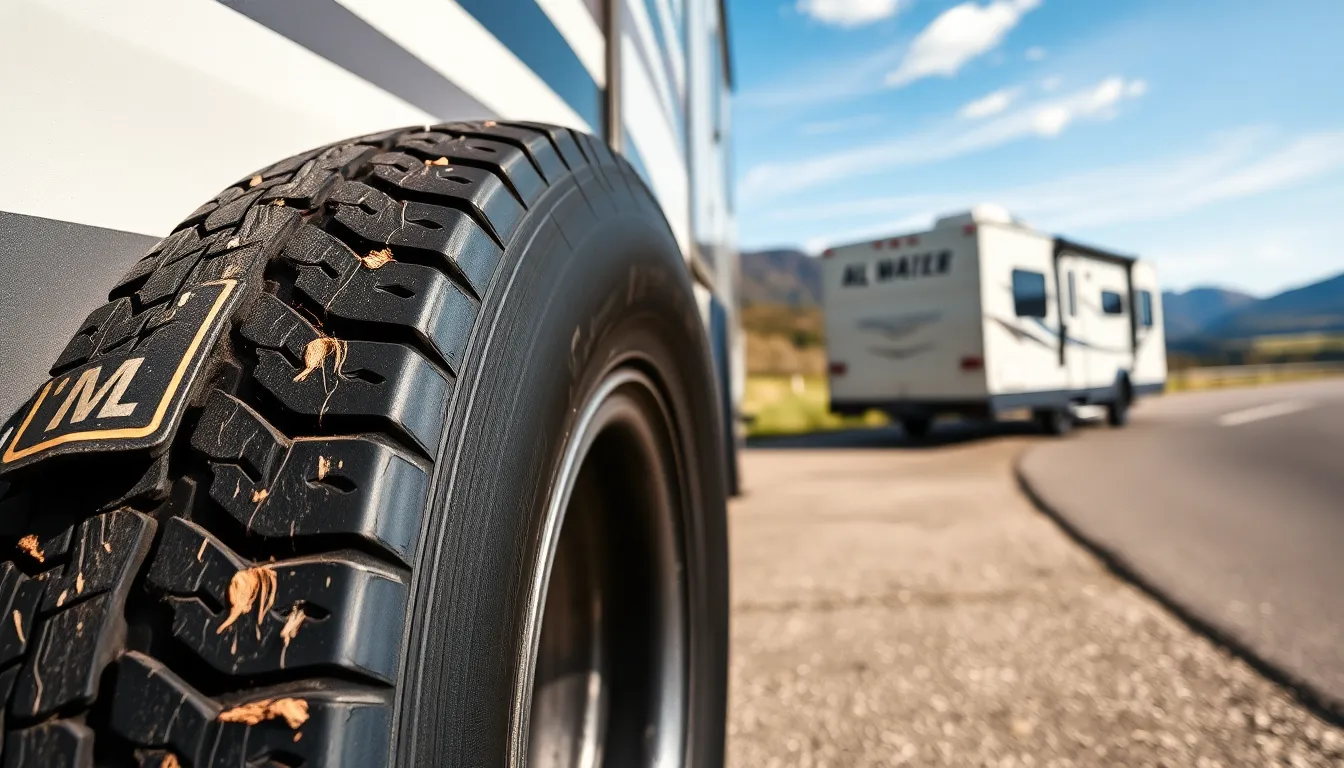
Selecting proper tires for your trailer involves matching speed ratings to exact operational requirements and regulatory compliance. We examine the critical factors that determine optimal tire selection for safe towing operations.
Matching Speed Rating to Trailer Type
Different trailer categories require exact speed rating considerations based on their intended use and operational patterns. Recreational vehicle trailers typically benefit from M rated tires since most camping and leisure travel occurs at speeds between 60-75 mph on highways and secondary roads.
Utility trailers used for local hauling and equipment transport often operate below 65 mph, making M rated tires an economical choice that provides adequate safety margins. Construction trailers carrying heavy machinery typically require higher speed ratings like N or P due to commercial transport demands and extended highway operations.
Boat trailers present unique challenges because launch ramp conditions and salt water exposure affect tire performance differently than standard highway operations. We recommend M rated tires for recreational boat trailers under 26 feet, while larger vessels requiring commercial transport may benefit from N rated options.
Horse trailers and livestock transport vehicles demand enhanced stability and heat dissipation capabilities during extended highway travel. Commercial operators frequently specify N or higher speed ratings to maintain consistent performance during long distance hauling at sustained highway speeds.
Travel trailers exceeding 8,000 pounds GVWR often require enhanced tire specifications beyond basic M ratings. Heavy duty recreational units benefit from N rated tires that provide improved heat dissipation and structural integrity during mountain driving and extended highway operations.
Legal Requirements and Regulations
Federal Motor Carrier Safety Administration guidelines establish minimum tire performance standards for commercial trailer operations exceeding 10,001 pounds GVWR. These regulations mandate periodic tire inspections and replacement criteria based on tread depth and sidewall condition.
State transportation departments enforce exact speed limits for trailer combinations that directly impact tire selection requirements. California restricts trailer combinations to 55 mph on many highways, while Texas allows 75 mph operations that may require higher speed rated tires for legal compliance.
DOT tire markings must include speed rating information for all trailer tires manufactured after 2007. We verify these markings during pre trip inspections to ensure compliance with manufacturer specifications and regulatory requirements.
Commercial trailer operators must maintain documentation proving tire speed ratings meet or exceed operational requirements for their exact routes and cargo types. Insurance providers often require verification of proper tire specifications before approving coverage for commercial hauling operations.
Weight distribution regulations in various states affect tire loading patterns and may require enhanced speed ratings to maintain legal operation. Overweight permits frequently specify tire performance requirements that exceed standard M rating capabilities for safe operation at permitted gross weights.
Maintenance Tips for M-Rated Trailer Tires
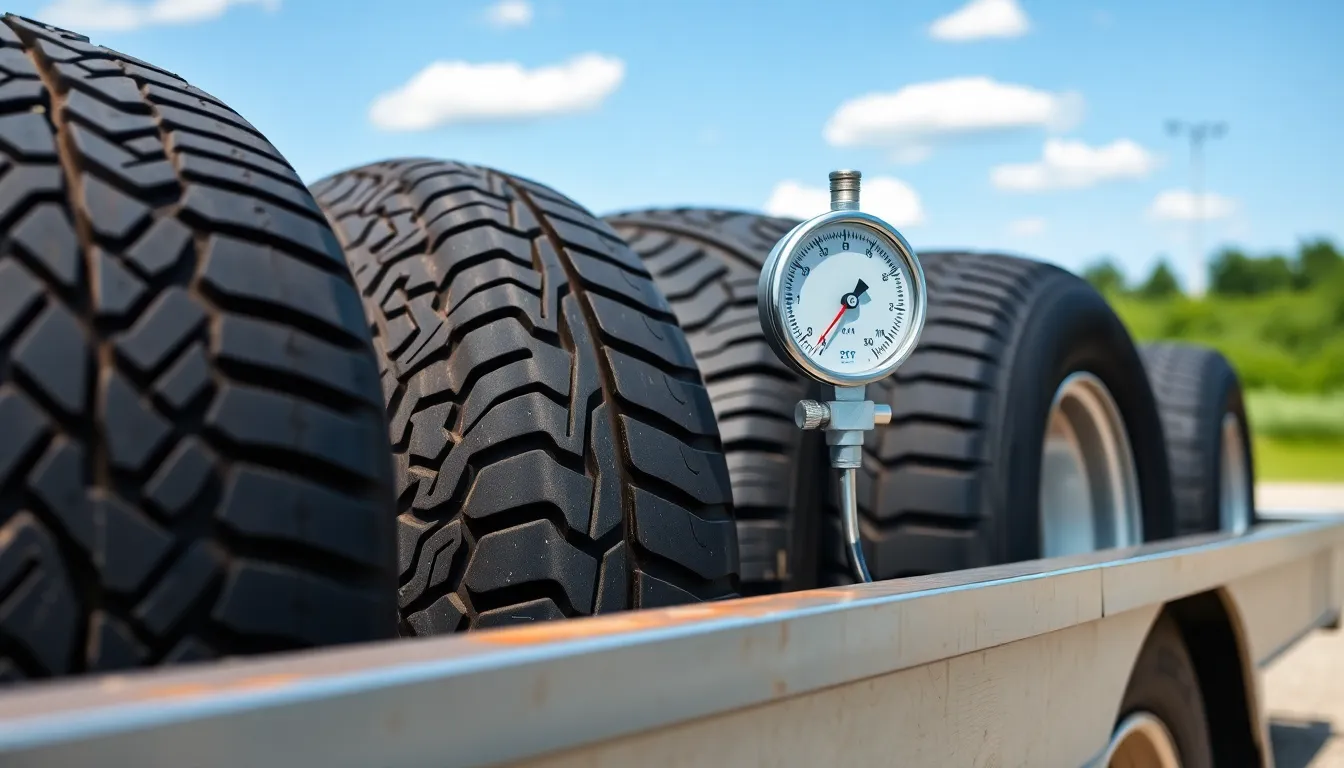
Proper tire pressure monitoring forms the foundation of M rated tire maintenance. We recommend checking tire pressure at least once monthly using a calibrated gauge when tires are cold. Temperature fluctuations affect air pressure by approximately 1-2 PSI for every 10°F change. Underinflated tires generate excessive heat buildup that compromises the structural integrity of M rated compounds. Maximum tire pressure specifications appear on the sidewall and typically range from 50-80 PSI for trailer applications.
Regular visual inspections detect early signs of wear patterns and potential failures. We examine tread depth using the penny test or dedicated depth gauges every 3,000 miles of travel. Uneven wear patterns across the tire surface indicate alignment issues or improper load distribution. Sidewall cracking becomes visible after prolonged UV exposure and signals rubber degradation. Small cuts or punctures require immediate attention to prevent air loss during highway operation.
Load distribution practices significantly impact M rated tire longevity and safety performance. We ensure trailer cargo placement maintains proper tongue weight between 10-15% of total trailer weight. Concentrated loads create excessive stress on individual tires and reduce their operational lifespan. Weight distribution hitches help equalize loads across all tire positions for trailers exceeding 5,000 pounds gross weight. Overloading beyond manufacturer specifications voids tire warranties and creates dangerous operating conditions.
Temperature monitoring prevents heat related failures during extended highway travel. We use infrared thermometers to check tire temperatures during rest stops on long trips. Tire temperatures exceeding 160°F indicate potential problems with pressure or load distribution. Ambient temperatures above 90°F require reduced operating speeds to maintain safe tire temperatures. Parking in shaded areas during stops allows tires to cool naturally before resuming travel.
Storage procedures protect M rated tires during extended periods of non-use. We clean tires thoroughly and apply UV protectant compounds before storage. Indoor storage prevents weather damage and extends tire life by 2-3 years compared to outdoor exposure. Tire pressure reduction to 75% of normal operating pressure prevents sidewall stress during storage. Periodic movement every 30 days prevents flat spotting and maintains tire shape integrity.
| Maintenance Task | Frequency | Critical Measurements |
|---|---|---|
| Pressure Check | Monthly | Cold PSI reading |
| Visual Inspection | Every 3,000 miles | Tread depth 4/32″ minimum |
| Temperature Check | During long trips | Maximum 160°F |
| Load Verification | Before each trip | GVWR compliance |
| Rotation Service | Every 6,000 miles | Cross pattern rotation |
Professional inspections identify issues beyond typical owner maintenance capabilities. We schedule annual tire inspections with qualified technicians who assess internal tire structure. Balancing services reduce vibration and extend tire life for trailers used frequently at highway speeds. Alignment checks ensure proper tire contact with road surfaces and prevent premature wear. Professional mounting and valve stem replacement guarantee proper sealing and safety standards.
Emergency preparedness includes carrying proper tools and spare tire equipment. We maintain fully inflated spare tires rated for the same load capacity as primary tires. Portable air compressors provide roadside pressure adjustments when commercial services aren’t available. Tire repair kits offer temporary answers for minor punctures until professional repairs can be completed. Emergency contact information for roadside assistance ensures quick response during tire related incidents.
Conclusion
Understanding M-rated trailer tires isn’t just about knowing the 81 mph speed limit—it’s about protecting your investment and ensuring everyone’s safety on the road. We’ve covered the technical aspects speed rating classifications and essential maintenance practices that directly impact your towing experience.
Regular maintenance combined with proper understanding of your tire’s capabilities creates a foundation for confident towing. When we monitor tire pressure check for wear patterns and respect speed ratings we’re taking proactive steps that prevent roadside emergencies and costly repairs.
Your trailer tires are the only contact point between your load and the pavement making them critical safety components. By implementing the maintenance schedule and safety practices we’ve discussed you’ll maximize tire life while maintaining the performance standards that M-rated tires are designed to deliver.
Frequently Asked Questions
What does the M speed rating mean on trailer tires?
The M speed rating indicates that trailer tires can safely operate at speeds up to 81 mph under optimal conditions. This standardized classification is part of a tire measurement system used by manufacturers worldwide to ensure consistent performance standards and help trailer owners understand their tire limitations.
What types of trailers commonly use M-rated tires?
M-rated tires are commonly found on recreational vehicle trailers, boat trailers, and utility trailers designed for highway travel. These tires are specifically engineered for trailer applications that require highway-capable performance while maintaining cost-effectiveness for typical towing scenarios.
What happens if I exceed the M speed rating of 81 mph?
Exceeding the M speed rating compromises safety margins and significantly increases the risk of catastrophic tire failure. Operating beyond this limit can cause excessive heat buildup, leading to tire blowouts and dangerous situations, regardless of proper load conditions or tire pressure maintenance.
How are tire speed ratings determined?
Speed ratings are determined through rigorous controlled laboratory testing where tires are subjected to specific conditions to measure performance, heat dissipation, and structural integrity. The highest speed at which a tire maintains its integrity during this testing determines its official speed rating classification.
How often should I check my M-rated trailer tire pressure?
You should check tire pressure monthly and before every trip. Proper tire pressure monitoring is crucial for M-rated tires as incorrect pressure can lead to premature wear, reduced performance, and increased risk of failure, especially when operating near the maximum speed rating.
What maintenance practices help extend M-rated tire life?
Key maintenance practices include monthly pressure checks, visual inspections every 3,000 miles, monitoring tire temperatures during long trips, and ensuring proper load distribution with tongue weight between 10-15% of total trailer weight. Regular professional inspections also help identify potential issues early.
What emergency equipment should I carry for M-rated trailer tires?
Essential emergency equipment includes spare tires, portable air compressors, tire repair kits, and basic tools for tire changes. This equipment ensures you’re prepared for tire-related emergencies and can maintain safety during your travels with M-rated trailer tires.
Can I use higher speed-rated tires instead of M-rated ones?
Yes, you can use higher speed-rated tires as they exceed M-rating specifications and provide additional safety margins. However, M-rated tires are specifically designed for typical trailer applications and offer adequate performance while maintaining cost-effectiveness for most towing needs.


